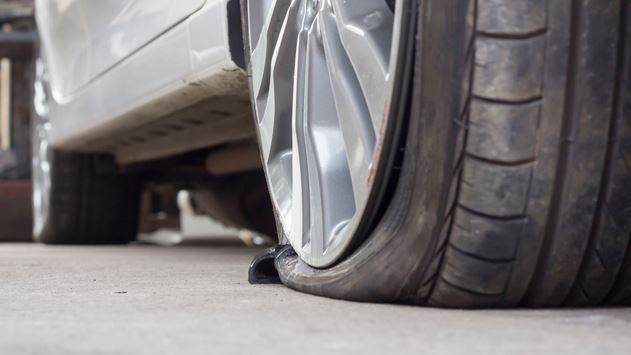SELECT THE WORDS & LEVEL
Flat tires happen all the time and can happen to anyone. No matter what kind of driver you are, no matter what kind of car you’re driving, you always have a chance to encounter this problem. In fact, this happens hundreds of millions of times all over the world every year. Kind of puts things in perspective, doesn’t it?
But what should you do if this happens to you in a place where you can’t stop and park on the side of the road? Can you keep driving with a flat tire? And how long can you do that without risking any major damage to the car? Let’s find out, shall we?
Avoid it if you can
Generally speaking, driving on a flat tire is not a particularly good idea. This can seriously damage your car and can put you in danger because you can’t count on your car behaving normally in this situation.
Your brakes, your suspension, your rims and the tire itself can all quickly become unusable if you keep driving with a flat. Remember, you can still save the tire if you react quickly and get it to a shop that can fix it, especially if you see that it just has low pressure.
But if at all possible, stop your car immediately and change the tire if you have a spare with you. That would definitely be the most prudent thing to do. However, in some situations, this is simply not possible. What do you do then?
Different types of accidents
If your tire has blown out completely and can under no circumstances be considered usable, driving for just a few yards can cause huge damage to your car. Simply, if there is nothing protecting the wheel, it will quickly fall apart if you keep driving.
But a flat tire is anything under the threshold of 20 PSI, and in some cases, it may be possible to continue driving for a little while more. However, if you see that the pressure is dropping alarmingly quickly, slow down to about 15 mph and do not drive more than a mile and a half (about two kilometres) like that.
And if you absolutely must drive like this, do it slowly and very carefully. Avoid potholes or any uneven surfaces and try to go in a straight line as much as you can. Remember, this is potentially a very dangerous situation both for you and for other vehicles, so caution is very much advised.
It is also possible that you have run-flat tires on, and these can buy you up to 50 miles after you suffer a puncture. Again, don’t go too fast because it will diminish the performance of the tire.
The bottom line is that you shouldn’t drive with a flat tire if at all possible, and the amount of driving you can do after this accident will depend on how much pressure the tire loses and what kind of tires you have. But the best course of action is to call for help ASAP.




